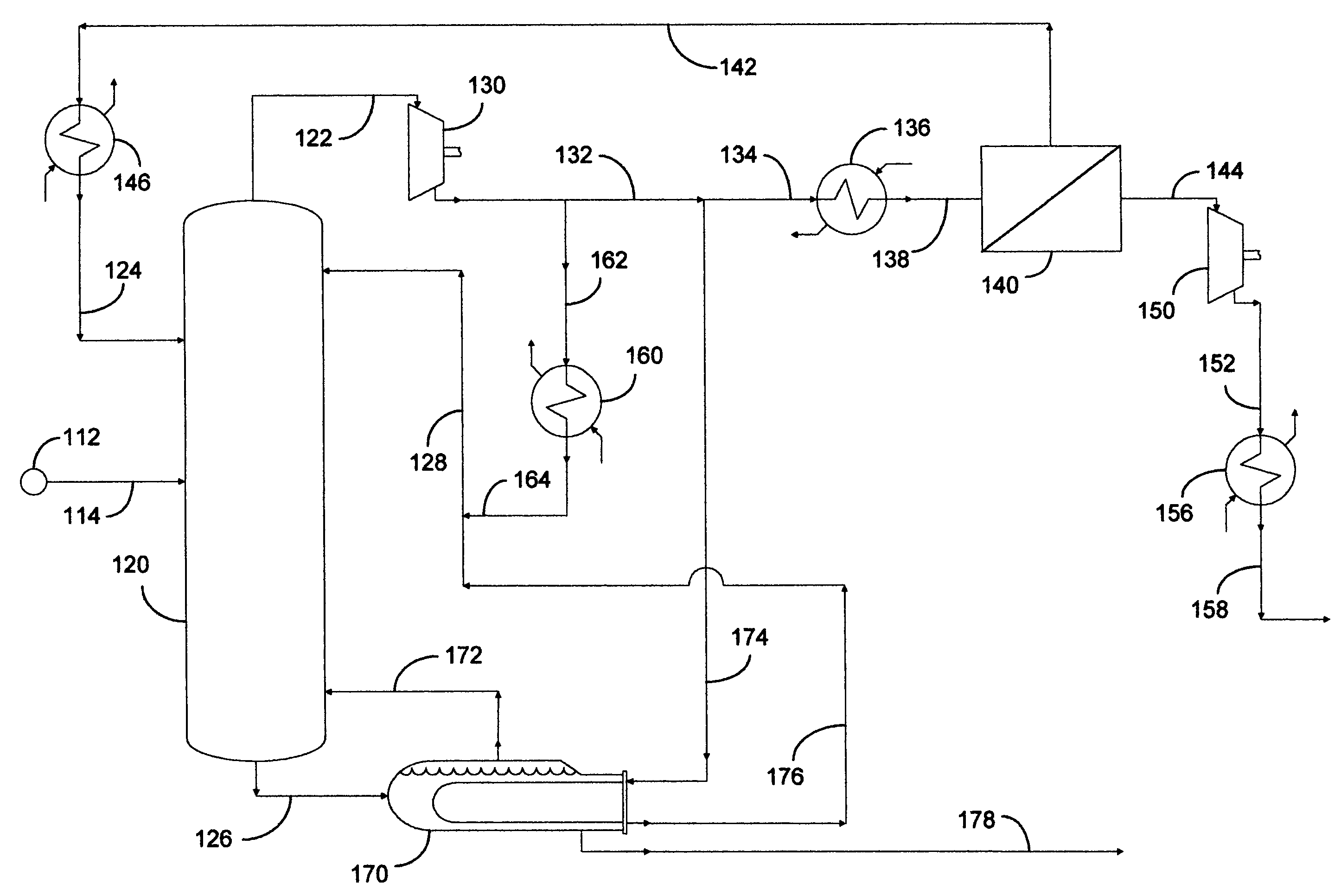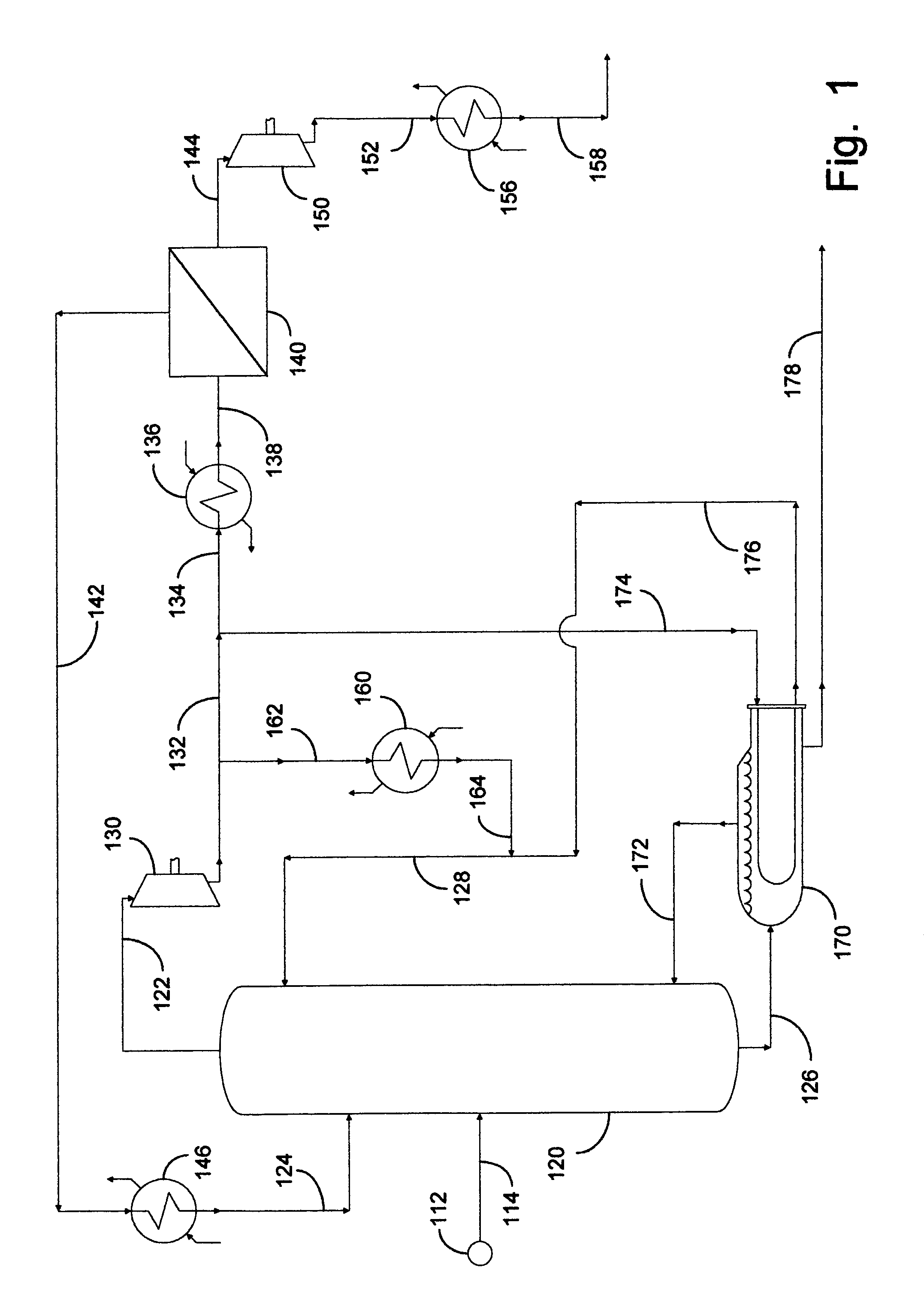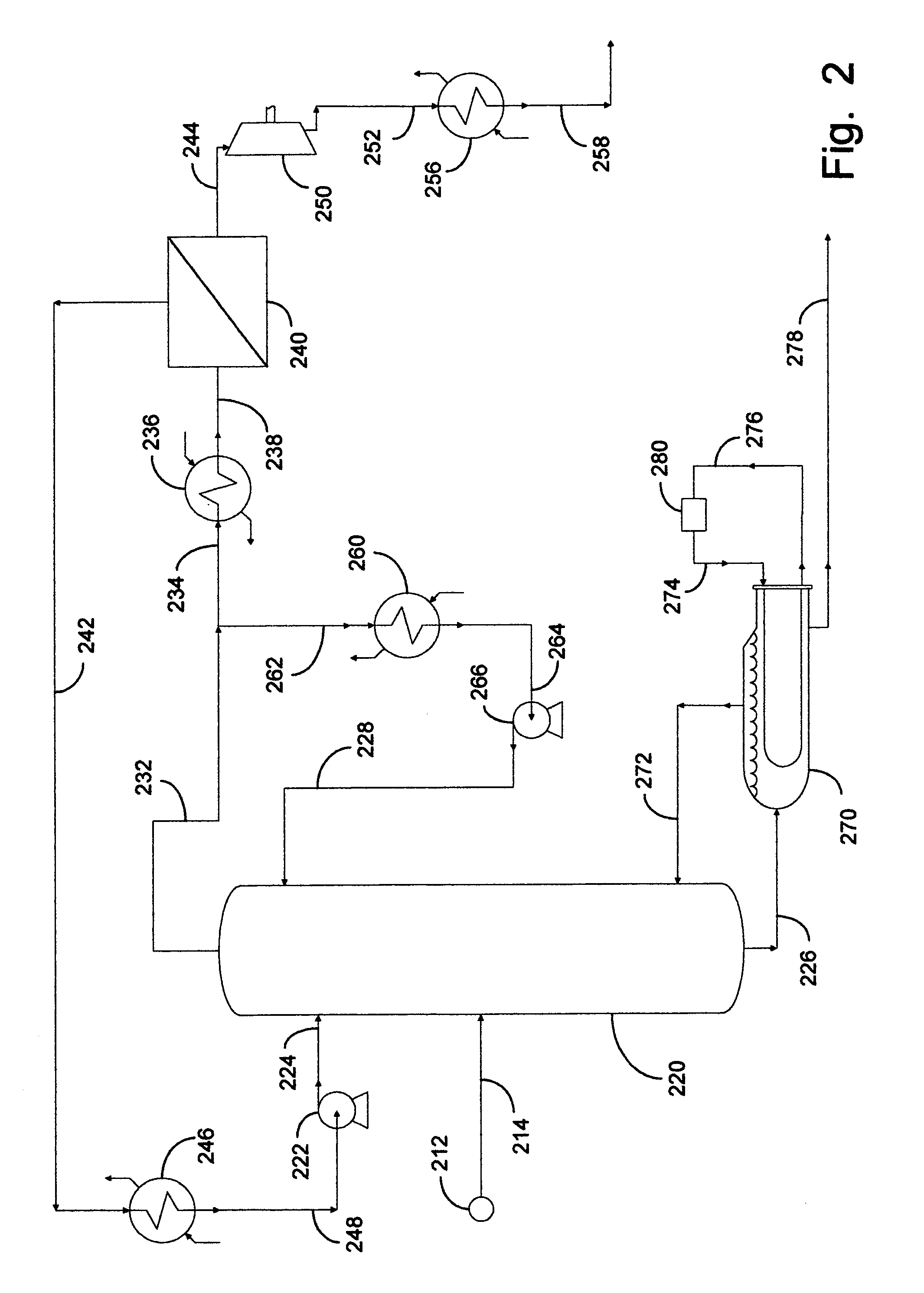Purification of fluid compounds utilizing a distillation - membrane separation process
a technology of distillation and membrane separation, applied in the direction of separation process, filtration separation, organic chemistry, etc., can solve the problems of large number of separation, inherently expensive separation method, and small practicable and theoretical enrichment achievable by this techniqu
- Summary
- Abstract
- Description
- Claims
- Application Information
AI Technical Summary
Benefits of technology
Problems solved by technology
Method used
Image
Examples
example 1
[0069]This example documents an aspect of the preferred embodiment of the invention depicted in FIG. 1. Fractional distillation column 120 was utilized as a C3 splitter with a portion of the compression overhead vapor advantageously distributed into a fugacity-driven membrane separation device 140. Calculations were made using 37.8° C. (100° F.) cooling water in condenser 160. Heat exchangers 136 and 146 were not employed in this example. A temperature gradient of 11.1° C. (20° F.) was assumed across the reboiler in order to set the pressure at the bottom of the column. A pressure drop of 0.1 psi per tray was assumed to determine the compressor suction conditions. This resulted in a column overhead pressure of approximately 140 psia. The liquid rate in the column was chosen so that the separation could be completed with 200 trays, a typical tray requirement for a C3 splitter, and the vapor rate was set so that the column bottoms product met the HD-5 Liquefied Petroleum Gas (LPG) spe...
example 2
[0075]This example documents an aspect of the invention depicted in FIG. 1, utilizing optional heat exchangers 136 and 146 on the membrane feed and / or the nonpermeate in order to limit the amount of vapor being recycled to the column. In this example, calculations were performed at conditions similar to those of Example 1 using heat exchangers 136 and / or 146 on the membrane feed and / or the nonpermeate. It was necessary to cool the membrane feed to from 26.7° to 37.8° C. (80° to 100° F.) or the nonpermeate to approximately 21.1° C. (70° F.) to eliminate vapor recycle to the column. However, this had a small impact on the performance of this propane-propylene separation system. Note that the absolute flow rate of the nonpermeate did not change when heat exchangers 136 and 146 were employed because the nonpermeate flow rate is affected by the feed composition, feed rate, area, and perm-selectivity of the membrane. The heat exchangers affected the phase when the nonpermeate entered the ...
example 3
[0077]This example documents an aspect of the preferred embodiment of the invention depicted in FIG. 2. Fractional distillation column 220 was utilized as a C3 splitter with a portion of the overhead vapor advantageously distributed into a fugacity-driven membrane separation device 240. The nonpermeate effluent from separation device 240 was completely liquefied and pressurized by means of pump 222 for recycling into column 220. Calculations were made using 37.8° C. (100° F.) cooling water in condenser 260. This resulted in a column overhead pressure of approximately 230 psia. The liquid rate in the column was chosen so that the separation could again be completed with 200 trays. At the same time, the vapor rate in the column was set so that the column bottoms product met LPG specifications.
[0078]Before the membrane was placed on the apparatus, the existing column diameter was sized to process 10,000 BPD of RGP from source 212 containing 74 percent propylene and 26 percent propane f...
PUM
| Property | Measurement | Unit |
|---|---|---|
| volume ratio | aaaaa | aaaaa |
| volume ratio | aaaaa | aaaaa |
| outer diameter | aaaaa | aaaaa |
Abstract
Description
Claims
Application Information
 Login to View More
Login to View More - R&D
- Intellectual Property
- Life Sciences
- Materials
- Tech Scout
- Unparalleled Data Quality
- Higher Quality Content
- 60% Fewer Hallucinations
Browse by: Latest US Patents, China's latest patents, Technical Efficacy Thesaurus, Application Domain, Technology Topic, Popular Technical Reports.
© 2025 PatSnap. All rights reserved.Legal|Privacy policy|Modern Slavery Act Transparency Statement|Sitemap|About US| Contact US: help@patsnap.com



